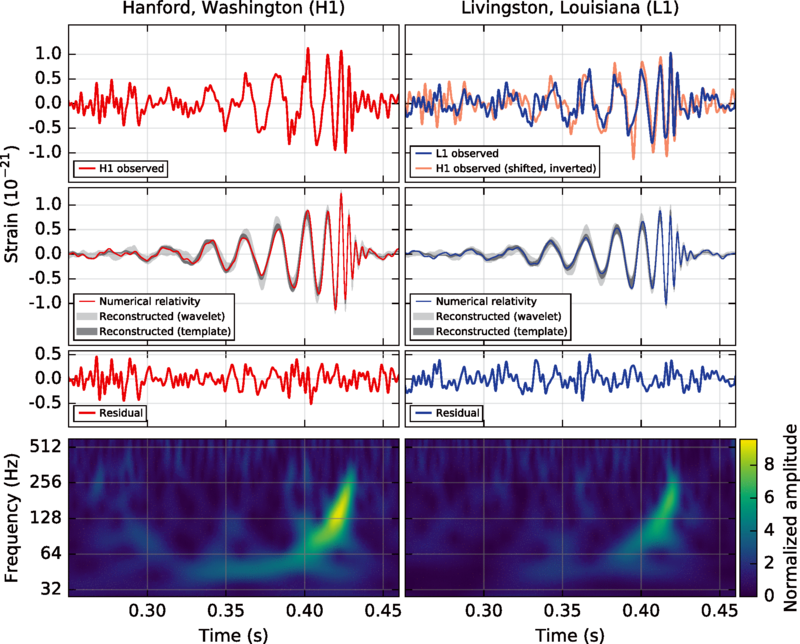Last year on September 15, the LIGO (Laser Interferometer Gravitational-Wave Observatory) and Virgo interferometer detected the gravitational wave of the collision of two binary black holes. They spent the last several months checking their observations to make sure that what they saw, actually happened and wasn't a glitch (like the infamous faster-than-light mistaken observation not too long ago). Yesterday, February 11th, they announced that they have confirmed their findings.
This really is a revolutionary discovery in science and absolutely is the most important one made thus far in this century. Our observations very closely matched what was predicted by General Relativity. And that made it all the more exciting.
All the observational data indicates that only a black hole-black hole pair could have given us the results we observed. A pair of any other objects, like a black hole with a neutron star, would not have been able to orbit each other with those the masses that were observed (35 solar masses for the larger object, 29 for the smaller) at the distances observed (less than 250 km), and at the observed frequency of 75 Hz.
Here's a very simple simulation of what a merger of a binary black hole pair looks like and a visualization of the gravity waves it generates, which is what was detected.
This really is a revolutionary discovery in science and absolutely is the most important one made thus far in this century. Our observations very closely matched what was predicted by General Relativity. And that made it all the more exciting.
All the observational data indicates that only a black hole-black hole pair could have given us the results we observed. A pair of any other objects, like a black hole with a neutron star, would not have been able to orbit each other with those the masses that were observed (35 solar masses for the larger object, 29 for the smaller) at the distances observed (less than 250 km), and at the observed frequency of 75 Hz.
Before now we weren't even exactly sure that the objects we've been detecting that we've been calling black holes really were the black holes described by general relativity. And now thanks to this new observation, we know that indeed they are.“This is transformational,” said Prof Alberto Vecchio, of the University of Birmingham, and one of the researchers at Ligo. “We have observed the universe through light so far. But we can only see part of what happens in the universe. Gravitational waves carry completely different information about phenomena in the universe. So we have opened a new way of listening to a broadcasting channel which will allow us to discover phenomena we have never seen before,” he said.
“This observation is truly incredible science and marks three milestones for physics: the direct detection of gravitational waves, the first detection of a binary black hole, and the most convincing evidence to date that nature’s black holes are the objects predicted by Einstein’s theory.”
https://www.theguardian.com/science...scovery-hailed-as-breakthrough-of-the-century
Here's a very simple simulation of what a merger of a binary black hole pair looks like and a visualization of the gravity waves it generates, which is what was detected.





